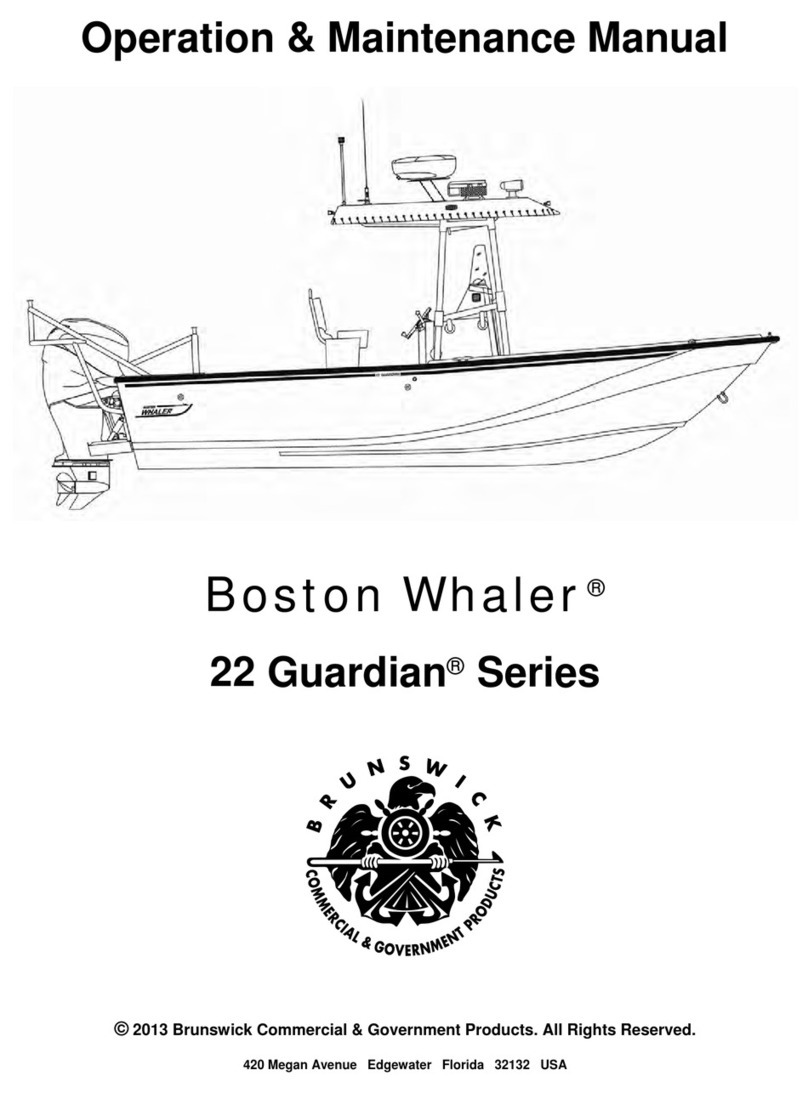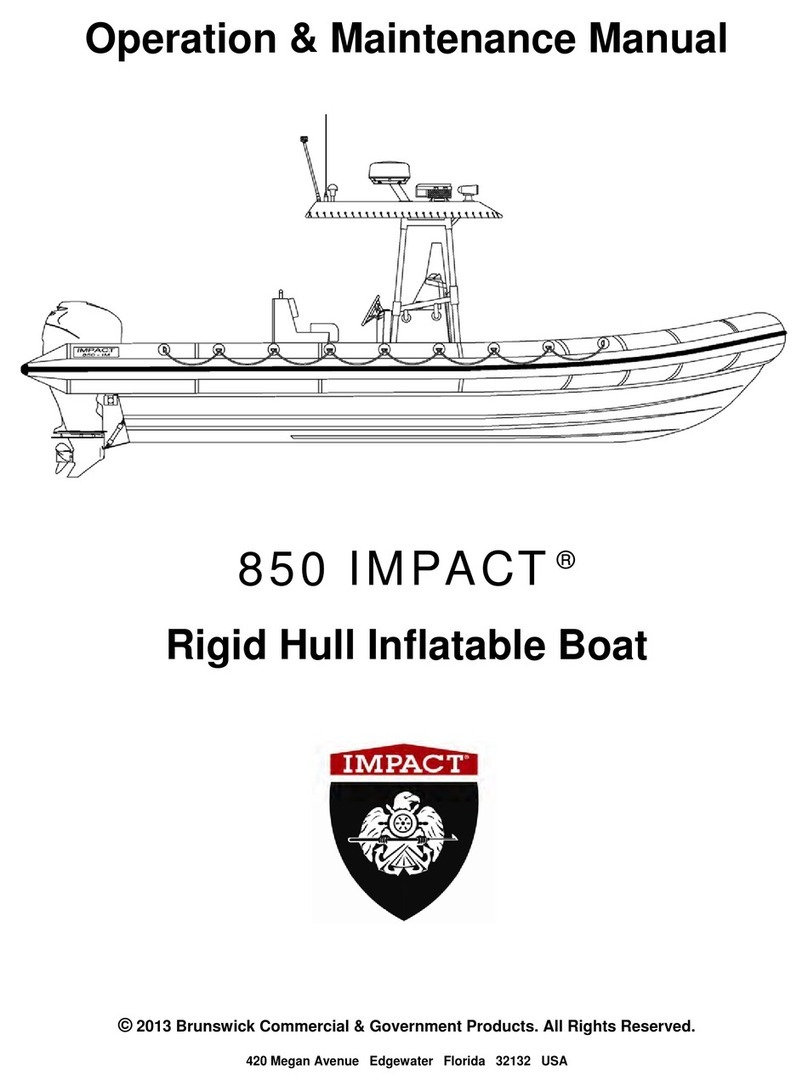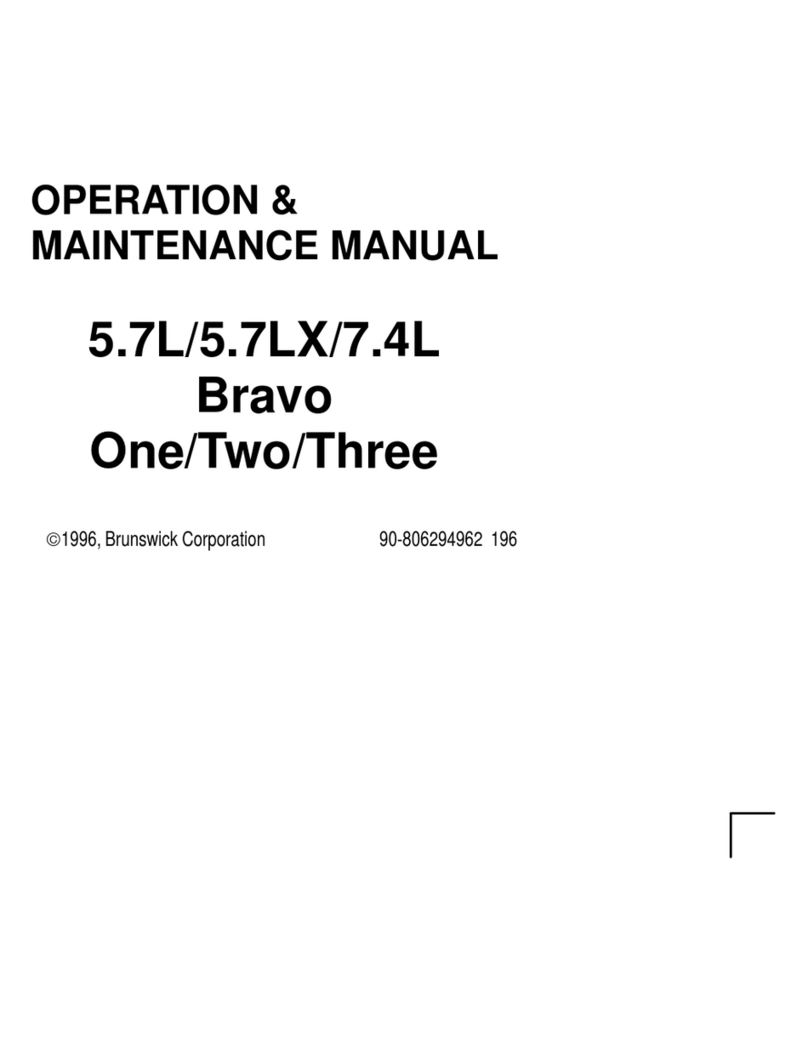
Table of Contents
Docking Lights ....................................... 4-7
Bilge Pumps ........................................... 4-7
Operation ............................................ 4-8
Maintenance ....................................... 4-8
Trim Tabs ................................................ 4-9
Proper Boat Trim .............................. 4-10
Rough Water ..................................... 4-11
Trim Tabs and Engines .................... 4-11
Trim Tab Control Box ...................... 4-11
Maintenance ..................................... 4-12
Compass ............................................... 4-13
Deviation ........................................... 4-13
Variation ............................................ 4-13
Night Lighting ................................... 4-13
Battery Parallel Switch ........................ 4-14
Console Interior Dome Light .............. 4-15
Cockpit Lighting .................................. 4-15
Siren & Strobe Light ............................ 4-16
Floodlights ........................................... 4-16
Towing System .................................... 4-17
Section 5 - Electrical Systems
Description ............................................. 5-1
Batteries ................................................. 5-1
Capacities ........................................... 5-2
Maintenance ....................................... 5-2
Cleaning .............................................. 5-3
Charging ............................................. 5-4
Grounding and Bonding ....................... 5-5
Definition ............................................. 5-5
Grounding ........................................... 5-5
Bonding ............................................... 5-6
Battery Switches .................................... 5-7
Battery Parallel Switch ...................... 5-7
OFF-ON Switch ................................... 5-8
1-2-ALL Switch ................................... 5-8
DC Power Distribution .......................... 5-9
Starboard Engine ............................... 5-9
Port Engine ......................................... 5-9
Bilge Pumps ..................................... 5-10
Helm Station Switch Panel .............. 5-11
Accessory Fuse Block ..................... 5-12
T-top Fuse Block .............................. 5-13
Electronics Distribution Panel ........ 5-14
DC Circuit Distribution ........................ 5-15
Helm Station Switch Panel .............. 5-15
Accessory Fuse Block .................... 5-17
T-top Fuse Block .............................. 5-17
Electronics Distribution Panel ........ 5-17
Section 6 - MaintenanceSection 6 - Maintenance
Specifications ........................................ 6-1
Hull Identification Number .................... 6-2
Options ................................................... 6-3
Hull Maintenance ................................... 6-3
Washing ............................................. 6-3
Waxing ............................................... 6-4
Compounding .................................... 6-4
Gelcoat & Fiberglass Repair ............ 6-4
Trim Care ............................................... 6-5
Aluminum ........................................... 6-5
Deck Hardware ................................... 6-5
Drains & Scuppers ............................. 6-5
Cutwater & Chafe Plates .................. 6-6
Hull Blistering ....................................... 6-6
Storage ............................................. 6-7
Inspection ........................................... 6-7
Waxing ................................................ 6-7
Bottom Painting ................................. 6-7
Fuel System ........................................... 6-9
Steering System .................................. 6-10
Approved Steering Fluids ............... 6-11
Batteries .............................................. 6-12
Capacities ......................................... 6-13
Maintenance ..................................... 6-13
Cleaning ........................................... 6-14
Off-Season Storage ............................. 6-15
Outboards ......................................... 6-15
Batteries ........................................... 6-16
Fuel System ..................................... 6-16
Hull Drainage .................................... 6-16
Freshwater System .......................... 6-16































